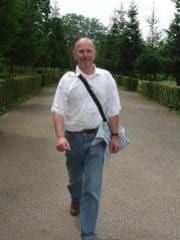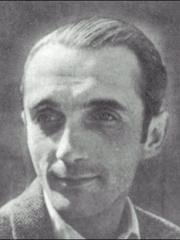Black Sun
Lachrymae, Chapter IV: The Final Chapter
An Online Journal by Richard Stanley<
(Originally appeared in R. S.' MySpace<, December 9th, 2007.)
Brethren, I have invited you here to this ancient, invisible theatre with the intention of not only unmasking the killer God responsible for these crimes against 'reality', but more cogently, to provide an unambiguous solution to two or perhaps three long running esoteric enigmas!
I salute those who have stayed with the program from the top. For late joiners I include an index to conjure order out of the scrolling chaos and serve as an aid memoir for those hardy few who dare read further. I have very little keyboard time at present and less in the months to come. Until we meet again this strange saga is my gift to you.
Be warned the completed text contains 'spoilers' and may be hazardous to your belief systems.
Hans-Jürgen Lange
Hans-Jürgen Lange wurde am 22.11. 52 in Bad Sachsa/Südharz geboren. In Düsseldorf studierte er "Visuelle Kommunikation". Zahlreiche Reisen führten ihn nach Südost-Asien, Indien und Nepal.
Als Autor des Buches "Otto Rahn und die Suche nach dem Gral" hat Lange sich wohl am intensivsten mit Otto Rahn auseinander gesetzt. Er beriet Rüdiger Sünner zu dem Film "Schwarze Sonne", das britsche BBC drehte ein Interview mit ihm und der Filmemacher Richard Stanley dokumentierte sein biografisches Wissen zu Rahn in "The Secret Glory".
Otto Rahn im Wikipedia
Otto Wilhelm Rahn (* 18. Februar 1904 in Michelstadt im Odenwald; † 13./14. März 1939 bei Söll (Tirol), Österreich) war ein deutscher Schriftsteller, Mediävist und Ariosoph,[1] der sich mit dem Gralsmythos beschäftigte.
Leben
Schule und Studium
Rahn wurde 1904 in Michelstadt/Odenwald als erstes Kind des Justizamtmanns Karl und Clara Rahn (geb. Hamburger) geboren. Ab 1910 besuchte er das humanistische Gymnasium erst in Bingen, wo er bis zum Beginn des Ersten Weltkriegs lebte. Sein Abitur machte er in Gießen. Dort begeisterte ihn sein Religionslehrer Freiherr von Gall erstmals für die Geschichte der Katharer. 1922 begann Rahn ein Jurastudium in Gießen, das er an der Albert-Ludwigs-Universität Freiburg und der Universität Heidelberg fortsetzte. 1925 bis 1928 unterbrach er sein Jurastudium und betätigte sich als Handelsreisender für verschiedene Verlage.
Otto Rahn Biography
CHRONOLOGY 1904-1939
18 Feb 1904 Otto Rahn born, Michelstadt. Parents Karl & Clara (nee Hamburger)
1910-1916 Junior school at Bigen
1916-21 Secondary school at GrieBen
1922 obtains Baccalaureat
1924 obtains Bachelor in Philology and History
1930 Rahn begins his European travels (Paris, Provence, Switzerland,
Catalonia, Italy)
1931 Rahn visits French Pyrenees. Visits "Spion" in Pyrenees with Himmler and Abetz
1932 Rahn leads a Polaires expedition in Pyrenees
13.12.33 Rahn joins the German Writers Association
1934 publishes "Kreuzzug gegen Gral" (Crusade against the Grail)
1935 appointed to personal staff of Heinrich Himmler
29.2.36 Rahn joins Allgemeine-SS, member 276 208
1936 Rahn visits Iceland with 20 men
1937 publishes "Luzifers Hofgesind. Eine Reise zu denguten Gelstern Europa" (Lucifer's Court in Europe; Rahn sent back to Languedoc (Montsegur), says he will return in 1939. Time of alleged Corbieres visit?
20.4.37 promoted to sub-lieutenant (Untersturmfuhrer)
Sep-Dec1937 military service for "disciplinary reasons" at Oberbayern Regiment, Dachau<





Neueste Kommentare
vor 12 Jahre 19 Wochen
vor 12 Jahre 19 Wochen
vor 12 Jahre 20 Wochen
vor 12 Jahre 20 Wochen
vor 12 Jahre 23 Wochen
vor 12 Jahre 29 Wochen